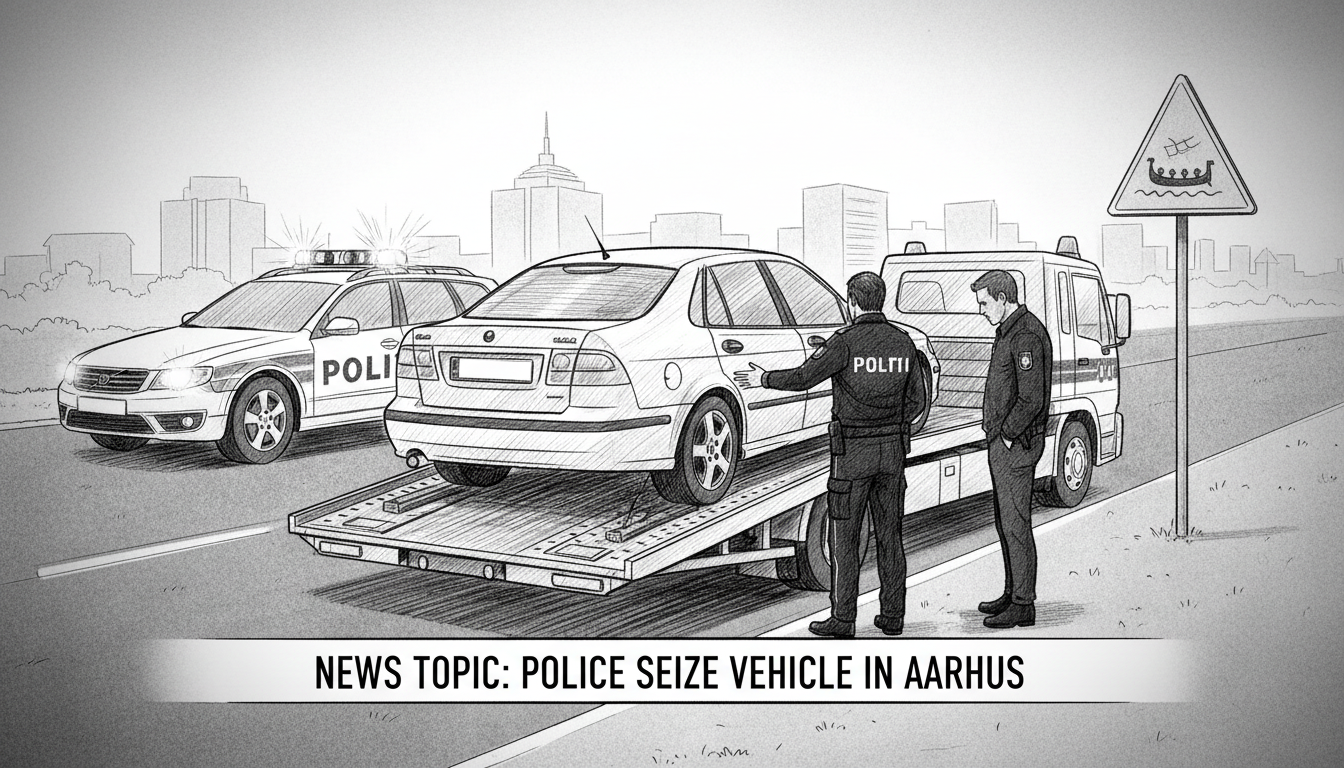A 44-year-old man learned the hard way that ignoring police instructions carries serious consequences in Denmark. Police in western Aarhus stopped the same driver twice within just ten minutes on Thursday evening, ultimately confiscating his vehicle after discovering he had no valid driver's license.
The incident began when officers first pulled over the man on Silkeborgvej in the Åbyhøj district. Police had clocked him driving 80 kilometers per hour in a designated urban zone, where lower speed limits typically apply for pedestrian safety. During this initial stop, officers discovered the driver lacked proper documentation to operate a vehicle.
Authorities issued him a formal charge for driving without a valid license. They explicitly instructed him to arrange for another person to drive the car home. This standard procedure aims to prevent immediate repeat offenses while allowing vehicle retrieval.
The driver apparently disregarded these clear directions. Just ten minutes later, a different traffic officer stopped the same man operating the identical vehicle in the same general area. This second violation occurred remarkably close to both time and location of the first intervention.
Danish traffic enforcement rules contain specific provisions for repeat offenders. Police confirmed this marked the third time authorities had caught this individual driving without proper credentials. The previous offense occurred before Thursday's double incident.
Under Danish vehicle confiscation laws, police possessed clear authority to seize the automobile immediately. This legal framework allows temporary vehicle seizure when drivers demonstrate repeated disregard for licensing requirements. The measure serves both as punishment and as preventive action against further illegal driving.
This case highlights several aspects of Danish traffic enforcement. Police maintain strong coordination between patrol units, enabling quick identification of repeat offenders. The country's systematic approach to traffic violations emphasizes both immediate intervention and longer-term prevention.
International readers should understand that Nordic countries typically enforce strict traffic regulations. Denmark, like its Scandinavian neighbors, maintains low tolerance for driving without proper documentation. The swift escalation from citation to vehicle seizure demonstrates how seriously authorities treat repeat offenses.
What happens to confiscated vehicles in Denmark? Police typically impound them for specified periods, with owners responsible for storage fees. Repeat offenders may face extended confiscation periods or permanent vehicle loss in extreme cases.
The Aarhus case represents more than just one individual's poor decisions. It reveals how integrated systems help police identify patterns quickly. It also shows the practical consequences of ignoring direct police instructions in Denmark.
For expatriates and visitors, this incident serves as a clear reminder. Nordic countries enforce traffic laws consistently and thoroughly. Temporary visitors should ensure they carry appropriate international driving permits alongside their home country licenses.
The two stops within ten minutes also demonstrate efficient police communication systems. Officers from different patrols quickly shared information about the ongoing situation, enabling the second intervention before greater harm could occur.
Danish traffic safety statistics show consistent focus on reducing unlicensed driving. Authorities consider proper licensing fundamental to road safety, since licensed drivers complete required training and testing.
This case will likely proceed through Danish legal channels. The driver faces multiple charges alongside the vehicle confiscation. The swift police response prevented potential accidents involving an unqualified driver operating a vehicle illegally in urban areas.

